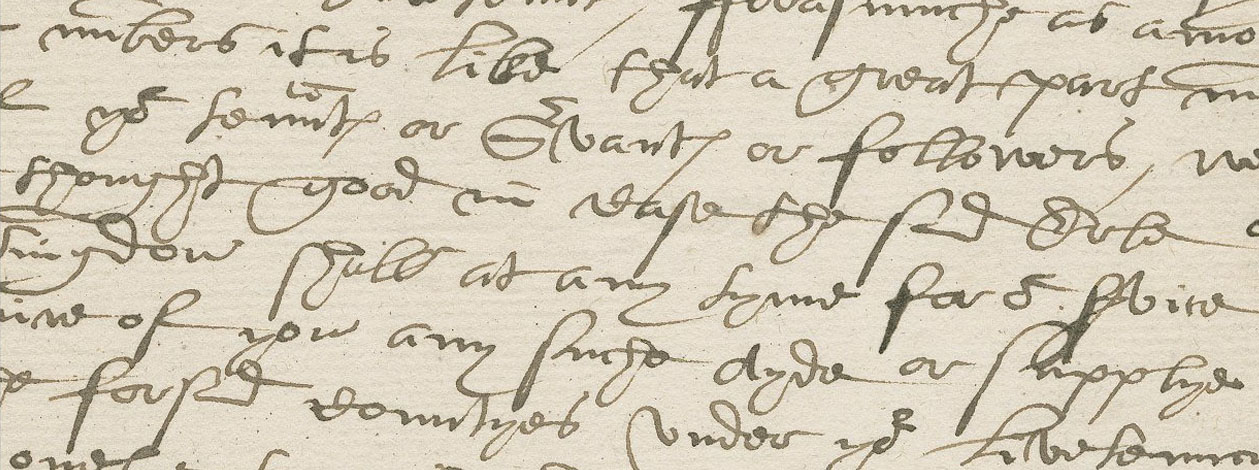The project broke new ground by making accessible online this important, yet virtually unedited, corpus of Renaissance letters. Research utilising the online edition was captured in articles, conference papers, two doctoral theses, podcasts and two monographs by the project team, as well as an exhibition and workshops at The National Archives in London and National Trust property New Hardwick Hall in Derbyshire. The project thus significantly increased our understanding of the documents and the correspondents involved, and therefore of Renaissance letters more generally.
The letters of the indomitable Elizabethan matriarch and dynast Elizabeth Talbot, Countess of Shrewsbury (c.1527-1608, known as ‘Bess of Hardwick’), provide an unparalleled historical resource. Her letters number almost 250 items of correspondence (over 70 of which are from Elizabeth Talbot, mainly written in her own hand) include over 60 correspondents and span a period of almost 60 years. No other 16th-century non-royal woman left such a large number of letters. The corpus is unrivalled not only in terms of its size, but also for its scope, breadth of social contacts, range of activities related, and variety of epistolary styles employed. There are instructions to servants and orders to builders; expressions of affection between husband and wife, as well as bitter marital disputes; gossip from court; news and intelligence; entreaties to the queen and her councillors; legal petitions and interventions; advice to her children and strategic marriage negotiations. They richly illustrate, in microcosm, the spectrum of 16th-century letter-writing activities and the functions that letters performed. Moreover, they show that Renaissance letter-writing was not an exclusively male or elite activity as many of Elizabeth’s correspondents were below the ranks of the nobility and gentry, and a quarter were women.
The letters have been mined by Tudor biographers and historians for nuggets of information about political, social, and domestic life, and details relating to the building of Hardwick Hall and Chatsworth House. But, prior to this project, they had yet to be examined as textual artefacts or for their linguistic information. The starting point for such analysis has been the edition of the letters. There had never been any former attempt to edit the complete correspondence, a lack that seemed staggering given the widely acknowledged importance of the life and letters of Elizabeth Talbot, as well as the letters’ intrinsic appeal. The letters are written in a variety of hands and scripts, of varying quality and levels of difficulty of decipherment, and are scattered throughout different archives in the UK and US. These two factors – handwriting and distribution – means that letters were well beyond the reach of most students and scholars of the period.
The project created online transcripts of the all letters, presented according to modern editorial standards, in searchable, downloadable, and print-friendly versions, accompanied by scholarly notes and commentaries on manuscript features and presentation. Alongside the creation and development of the edition, the letters were analysed for the way they textualise relationships, draw on created versions of voice and personae, and use visual and material features to communicate meaning. The findings of these analyses have been captured and disseminated as a series of outputs. Together, the edition and study, for the first time, allow us to hear Elizabeth Talbot speak for herself. The letters were edited and analysed by the project team in the English Language Department, University of Glasgow.
Website
Duration: 1st November 2008 – 31st January 2012
Project Team
- Dr Alison Wiggins (PI – English Language Department, University of Glasgow)
- Dr Alan Bryson (Research Associate – University of Glasgow; Oct. 2008 – Sep. 2009)
- Dr Daniel Starza Smith (Research Associate – University of Glasgow; Oct. 2011 – Dec. 2012)
- Dr Anke Timmermann (Research Associate – University of Glasgow; Jan. 2010 – June 2011)
- Dr Graham Williams (Research Associate – University of Glasgow; Oct. 2011 – April 2012)
- Katherine Rogers (Developer – The Digital Humanities Institute)
